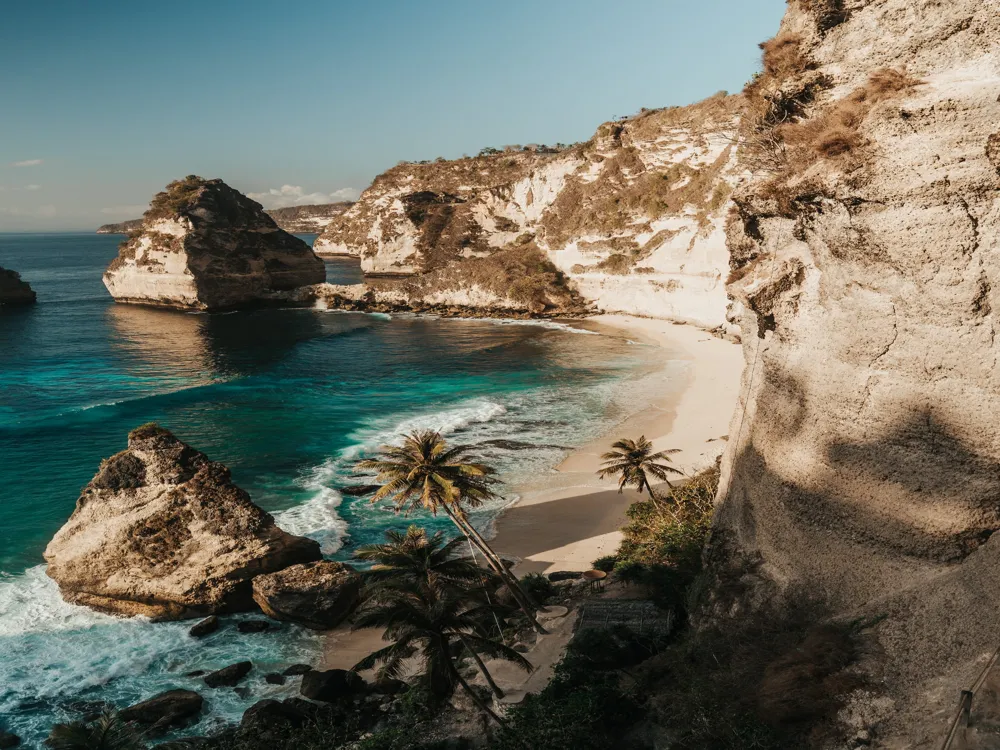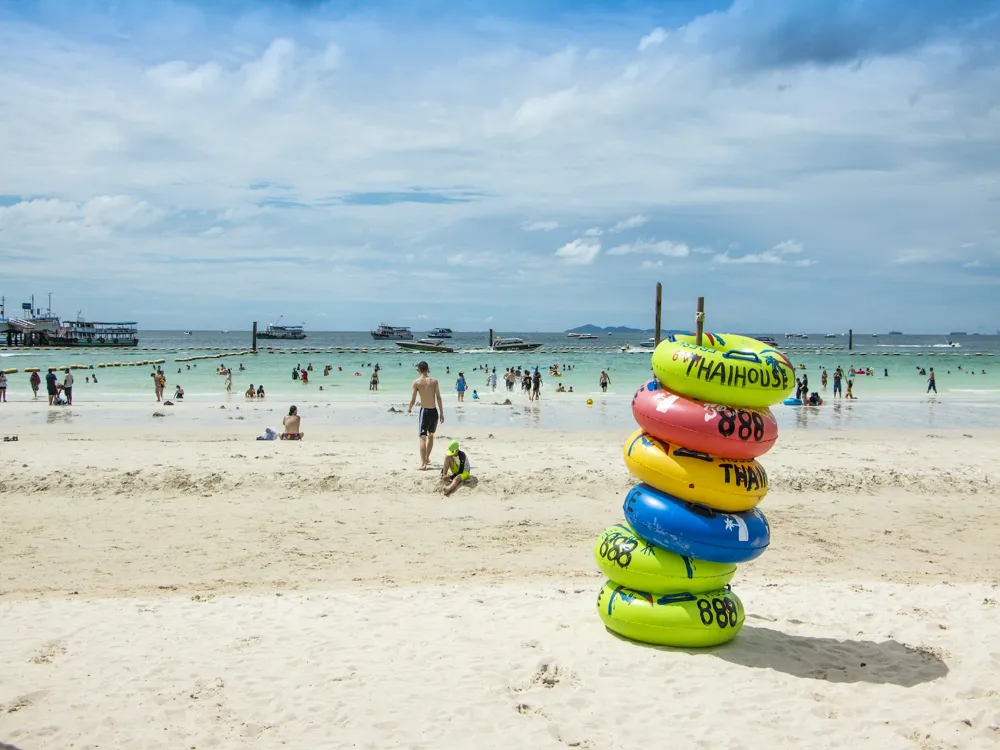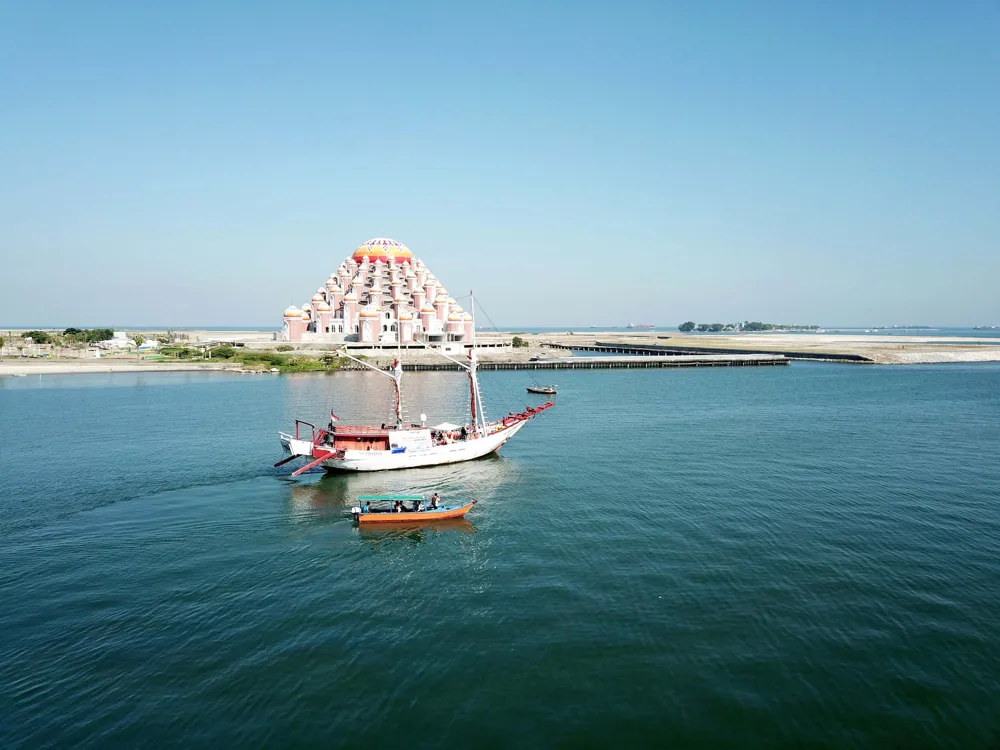Best Place to Visit Bali
Indonesia
1 out of 41 Places to visit in Indonesia₹ 13,500 onwards View Packages
Get Customized PackagesThe Land of Diversity
Top Hotel Collections

Private Pool

Luxury Hotels

5-Star Hotels

Pet Friendly
What is the Best Time to Visit Bali?
Bali, the enchanting Indonesian paradise, beckons travellers with its vibrant culture, stunning landscapes, and pristine beaches. Choosing the ideal time to visit this tropical haven is crucial for an unforgettable experience. Let's delve into the intricacies of Bali's weather and explore the best seasons for your dream getaway.The most stylish time to visit Bali is between April and October, which is the dry season. Bali receives dry and sunny rainfall during these months, making it perfect for exploring the strands, artistic spots, and out-of-door conditioning. The moisture is lower, and the downfall is minimal. These months also offer excellent conditions for fishing and water sports along Bali's beaches. Bali has two main seasons: the dry season( April – October) and the wet season( November – March). For excursionists who would like to enjoy the crowds, escapism, and vibe of Bali, July, August, and December are the peak times to visit. December to March is the stormy season in Bali, but the downfall is that it's generally short and does not last long. Since this is the low season, with significant reductions in prices and cheaper accommodation, it can be a good time to visit Bali on a budget. The low season is what any rubberneck should aim for. Visit Bali in April, May, September, or October, and the islet can be appreciated for its style. Some of Bali's stylish hospices can be snapped up at reduced rates, and of course, airfares are much cheaper. And having smaller people around means you get the islet to yourself with fewer crowded strands, tabernacles, and roads.
More about the Best Time to Travel to Bali
Travel Peak Season in Bali
Bali experiences its peak season from June to August, attracting a plethora of tourists seeking the perfect beach escape. The weather during this period is characterised by balmy temperatures and minimal rainfall. It's an opportune time for water activities, cultural events, and exploring the island's iconic landmarks.The peak sightseer season in Bali generally occurs during the dry season, which spans from May to September. This period is characterised by favourable rainfall conditions, making it the most popular time for callers. While the dry season offers ideal rainfall conditions and a lively atmosphere in Bali, trippers.Those seeking a quieter experience may consider visiting during the shoulder seasons( April and October), when the rainfall is still favourable and there are smaller crowds. Still, it's important to note that Bali's climate allows for a year-round trip, and each season offers its own unique charm.
Travel Offseason in Bali
For those who prefer a quieter ambiance and discounted accommodations, the offseason from January to March is an excellent choice. While occasional rain showers may occur, the lush landscapes and cultural festivities make it a compelling alternative for the discerning traveller.While the wet season in Bali has its advantages, trippers should be prepared for intermittent heavy downfalls and the possibility of conditioning being affected. Coastal areas may witness stronger currents, and some out-of-door excursions may be limited. Still, for those seeking a more budget-friendly and serene experience with unique artistic openings, the out-of-season in Bali can be a charming time to visit.
Bali Travel Packages
View All Packages For Bali
Bali Weather in Winter (November – February)
Bali Weather in November
November marks the beginning of Bali's winter, with temperatures averaging around 27°C. The island is transitioning from the wet to the dry season, offering a perfect blend of lush greenery and sunny days. It's an ideal time for outdoor adventures and exploring Bali's cultural heritage.
Bali Weather in December
December brings cooler temperatures, hovering around 26°C. The weather remains relatively dry, making it an excellent time for beach activities and immersing yourself in the local festivities, including vibrant Christmas celebrations.
Bali Weather in January
January is characterised by pleasant temperatures of approximately 26°C, making it a favourite among travellers. The weather is conducive to exploring Bali's temples, indulging in water sports, and relishing the scenic beauty of the island.
Bali Weather in February
As winter reaches its peak in February, temperatures stay around 27°C. This month is perfect for cultural enthusiasts, with numerous festivals showcasing Bali's rich traditions and artistic heritage.
Bali Weather in Summers (March to June)
Bali Weather in March
March welcomes warmer temperatures, averaging 28°C. It's an exciting time for nature lovers as Bali's landscapes burst into full bloom. From lush rice terraces to vibrant flower festivals, March offers a sensory feast for travellers.
Bali Weather in April
April continues the warm trend, with temperatures around 28°C. The clear skies and pleasant weather make it an ideal month for outdoor activities, including trekking, cycling, and exploring Bali's diverse flora and fauna.
Bali Weather in May
May sees temperatures reaching 29°C, creating the perfect conditions for beachgoers. The sea is calm, inviting water enthusiasts to dive into Bali's crystal-clear waters and discover its vibrant underwater world.
Bali Weather in June
June heralds the start of the dry season, with temperatures peaking at 30°C. It's the quintessential summer month, offering endless opportunities for sunbathing, water adventures, and immersing yourself in Bali's vibrant nightlife.
Bali Weather in Monsoon (July – October)
Bali Weather in July
July marks the onset of the monsoon season, bringing occasional rain showers and cooler temperatures of around 29°C. Despite the rain, Bali's landscapes are at their most picturesque, making it a favourite among photography enthusiasts.
Bali Weather in August
August continues the monsoon season, with temperatures remaining at 29°C. While rain showers are more frequent, they are often short-lived, allowing travellers to explore Bali's attractions between showers.
Bali Weather in September
September sees a gradual decrease in rainfall, with temperatures averaging around 29°C. It's an excellent time for budget-conscious travellers, as accommodation prices start to dip and the weather becomes more predictable.
Bali Weather in October
October marks the end of the monsoon season, with temperatures around 29°C. The island begins to dry up, offering a delightful mix of sunny days and lush green landscapes. It's an ideal time for exploring Bali's natural beauty without the crowds.
In conclusion, choosing the best time to visit Bali depends on your preferences and priorities. Whether you opt for the vibrant peak season, the serene offseason, or the transitional periods in between, Bali promises a memorable experience year-round.
Places To Visit In Bali
Nearby Places Bali
Bali Photos
View All Photos For BaliBrowse Package Collections
Browse Hotel Collections
Faq
Q: When is the best time to visit Bali for ideal weather conditions?
A: The best time to visit Bali for optimal weather is during the dry season, which spans from April to October. This period ensures sunny days, low humidity, and minimal rainfall, providing an ideal climate for outdoor activities and beach enjoyment.
Q: Are there specific months to avoid due to heavy rainfall or unfavorable weather?
A: The wet season in Bali occurs from November to March. Although the island remains lush and green during this time, heavy rainfall and occasional storms may disrupt outdoor plans. Travelers might consider avoiding these months if they prefer drier conditions.
Q: What are the peak tourist seasons in Bali?
A: Bali experiences peak tourist seasons during July and August, as well as during the Christmas and New Year holidays. During these times, popular attractions and accommodations may be crowded, and prices may be higher. Planning your visit during shoulder seasons (April-May, September-October) can offer a more relaxed experience.
Q: Are there any unique cultural events or festivals that travelers should consider when planning a visit?
A: Yes, Bali is renowned for its vibrant festivals. The Nyepi (Silent Day) celebration usually occurs in March, marking the Balinese New Year. During this time, the island observes a day of silence, and various unique rituals take place. Travelers interested in cultural experiences might plan their visit around this festival.
Q: What is the surf season in Bali, and when is the best time for surfing enthusiasts to visit?
A: Bali is a popular destination for surfers, and the best time for surfing is during the dry season, particularly from May to September. During these months, the west coast experiences consistent swells, making it an ideal time for surfing enthusiasts to enjoy the waves.


















